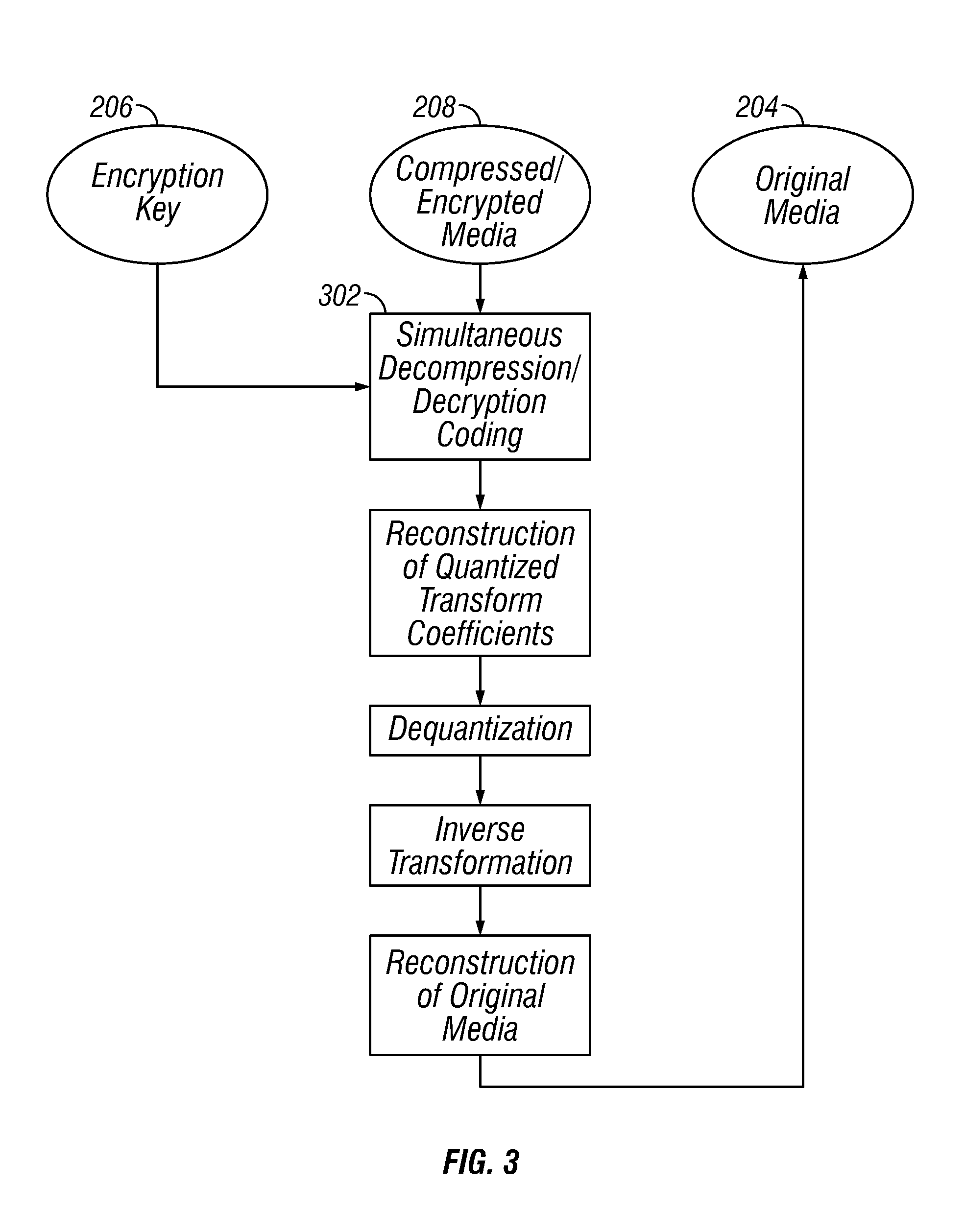Systems and methods for simultaneous compression and encryption
a simultaneous compression and encryption technology, applied in the field of multimedia compression and encryption, can solve the problems of data rendering unintelligible to the unlicensed user or a user that does not, encryption should not (in general) be performed before compression, and compression operation will actually inflate the size of the file that was intended to be compressed, etc., to achieve strong security, fast implementation, and competitive compression ratio
- Summary
- Abstract
- Description
- Claims
- Application Information
AI Technical Summary
Benefits of technology
Problems solved by technology
Method used
Image
Examples
examples
[0070]An adaptive SCE encoder (and corresponding decoder) was implemented in MATLAB code. The encoder output was compared to MATLAB implementations of pure Huffman and Adaptive Arithmetic entropy coders in the lossless case with respect to both compression performance and algorithm complexity. Compression performance was measured by the compression ratio C=bits original / bits compressed which provides a measure of how many times smaller a compressed file is. Therefore, the larger the compression ratio, the better the compression performance of the coder.
[0071]SCE was also integrated into an implementation of the JPEG standard to provide a lossy compression at similar quality levels. Total compression between the SCE version of JPEG and traditional JPEG was also compared with the quality level set to medium. Results are summarized for each of three images of six classes which exhibit different types of statistics. Table 3 summarizes the results for natural, binary, textured, and commo...
PUM
 Login to View More
Login to View More Abstract
Description
Claims
Application Information
 Login to View More
Login to View More - R&D
- Intellectual Property
- Life Sciences
- Materials
- Tech Scout
- Unparalleled Data Quality
- Higher Quality Content
- 60% Fewer Hallucinations
Browse by: Latest US Patents, China's latest patents, Technical Efficacy Thesaurus, Application Domain, Technology Topic, Popular Technical Reports.
© 2025 PatSnap. All rights reserved.Legal|Privacy policy|Modern Slavery Act Transparency Statement|Sitemap|About US| Contact US: help@patsnap.com



